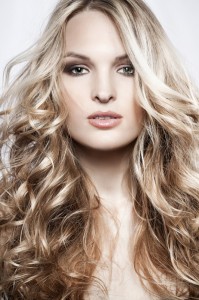What is Beauty?
 International Journal of Cosmetic Surgery:
International Journal of Cosmetic Surgery:
Paul Valery said, “health is the silence of the organs”, and the world health organization that “health is not only the absence of illness but a state of complete mental and social well being”. On the other hand, beauty, which Plato placed behind health and before fortune, has not been well defined.
A cosmetic surgeon by definition must create or conserve beauty. Surgical techniques abound in the textbooks of Europe north, south and Central America but, in my opinion, artistic teaching on beauty or human beauty is not taught enough.
The cosmetic surgeon often finds it difficult to define beauty, he is not alone. Ask different people and the answers vary considerably, and in the main are not satisfactory. This is why I thought it would be useful to approach the subject from a psychological point of view, and attempt to understand what it is, that enters the mind of a person, cosmetic surgeon or not, when she percieves, or does not perceive the feeling of beauty. It is important to understand this feeling within us in order to guide us during our operations.
Beauty
What is beauty? What do the books say? The dictionaries? The philosophers?
– Right from the start we are told that beauty is about proportion, equilibrium, symmetry. I therefore want to explain beauty objectively and describe the different canons of Egyptian, Greek and Roman. Apparently the centimeter is not the sole judge, little by little the subjective has entered into the equation.
– Beauty is an ensemble of shapes and proportions, which bring us pleasure and which we admire, but the concept varies according to different cultures.
– Beauty is a balance between shape and volume.
– Beauty stimulates an aesthetic feeling within us, pleasing to the eye, a sense of admiration. Some say beauty is a visual pherormone!
– Beauty is a combination of qualities such as form, proportion, colour in a human face (or other object) which delights the sight.
– These last four words are important, beauty does not exist itself, it exists in the eye of the beholder. If something pleases someone, it is beautiful to him. If this same thing does not please another, it is not beautiful to him. It is not that which is beautiful that pleases him, it is that which pleases him that is beautiful.
– David Hume (1711-1776) the Scottish philosopher said, more than two hundred years ago, “beauty is essentially a private and personnel experience. Beauty is in the eye and mind of the beholder”. He also said, “beauty is not a quality of the thing itself, but that which exists in the mind of those who contemplate it”. Everyone experiences beauty individually.
– Eric Newton: “beauty is something which gives pleasure, but that which gives pleasure to one person does not necessarily give pleasure to someone else”.
– Some philosophers conclude, “that which is beautiful is good, that which is good is beautiful”. What the poetess Sapphie said a long time ago was “that which is beautiful is good and he who is good will soon become beautiful”.
– Our past feelings are partly responsible for how we feel today. Our parents, love, former loves, women and friends. They remind us of past experiences, and beauty is not represented by the detail but by the whole collection being greater than the sum of its parts. Equally today’s emotions will be responsible for tomorrow’s emotions. The happy and unhappy times of our past life leave permanent impressions guiding our preferences. The faces we have loved during our youth, warm and comforting, continue to live on in our mind.
– Beauty is not only a question of the face, voice, body or a graceful physique. People are beautiful because of their character, personality, their ability to bring joy, their capacity to love. We see emerging the notion of charm.
– When we like a face we like the spirit that animates it and it is not enough to say that someone is physically attractive, a person can be attractive in many ways.
– Beauty and charm are often confused. Cleopatra, George Sand, Louise de la Valliere and Theodora were famous for their beauty, in fact they were not very beautiful but possessed great charm. Beauty is more an illusion than a reality.
– Beauty is not for the eye but for the mind.
– The beauty of the personality eclipses the beauty of the face. We have seen many ways to define beauty and that it is often associated with charm. Charm differs from beauty in that it lasts forever, whereas beauty fades. The English say “Charm lasts! Beauty blast! “. Finally we see that it is not only the eye that judges whether someone or something is beautiful, it is above all the mind and that which we term the heart or inner beauty.
– According to the American sociologist Frumkin, a woman is deemed beautiful according to her “sexual aptitude”. Whether she is judged beautiful or not depends not only on the symmetry of her proportions or shape but equally by the potential sexual functions suggested by these attributes, and the sensual emotion is transformed into an aesthetic emotion.
– The preceding classic assertions allow us to conclude that the notion of beauty differs according to the culture and the individual and that it is not exclusively a question of shape, form and symmetry. A person’s personality, charm and interior beauty powerfully contribute to elicit a pleasing impression in the beholder. The eye is not the sole judge, there is also the spirit and above all the heart. The mind is influenced by old memories, which reside within us and shape our judgment in the same way that today’s experiences will influence the future. This is seen in a phrase of Buddha “Today is the son of yesterday and the father of tomorrow”. Beauty is like an iceberg: only one part of it is visible.
Konrad Lorenz’s Theory
Konrad Lorenz, Nobel Prize winner for Medicine and Physiology in 1973, has contributed in a decisive way to the progress of the biology of behavior. It is he who helped us understand human beauty.
In his work, Essays on Animal and Human Behavior, he proposed the following drawing, which explains the release of an emotion in both human and animals to care for young. In the left column one sees a child’s head and the heads of very young animals, a gerbil a Pekinese and a robin red breast. In the column on the right we see an adults head and the heads of the same animals as adults.
If one asks which column is preferred the left is automatically chosen. Konrad Lorenz concluded from this that beauty is an emotion, an emotion associated with the desire to protect. Only the left column evokes this emotion. This emotion is associated with a desire to protect as much in humans as in animals. It is, he says, the release of an innate behavior. A relatively large head, a disproportionately large forehead, large eyes placed underneath, prominent curved cheeks, short thick limbs a firm elasticity, and awkward movements are the essential defining characteristics of “sweet” and “pretty” these present themselves according to the law of the ‘summation of excitations’ of a small child or ‘bait’, like a doll or a cuddly animal. Just like the dolls made today. On the left are those that give the impression of a “sweetie” (child, gerbil, Pekinese, red breast), the adults to the right do not elicit this caring reaction (man, hare, hunting dog, blackbird). The conclusion is obvious: beneath the traits of an adult, the face of a child must show through.
Everyone is instinctively attracted by a child’s face. The sight of a child’s face immediately provokes within us an emotion and this emotion is automatically accompanied by a desire to protect.
This is




